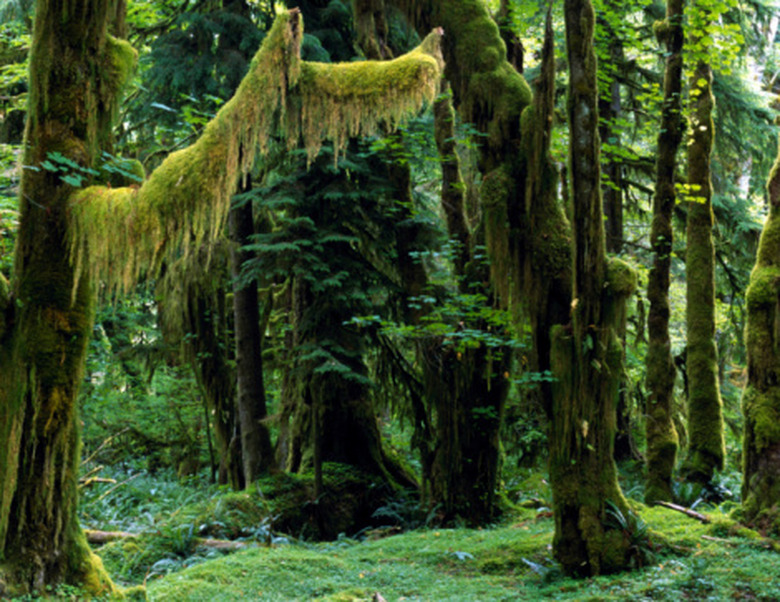What Are Rainforest Decomposers?
Decomposers are living things that get their energy from the waste materials of other organisms. The rainforest ecosystem relies on these organisms to break down waste materials into usable energy for other plants. Because of the abundance of life in the rainforest, the process of decomposition happens quickly and at a large scale.
Importance
Importance
Although these organisms are small and often overlooked, decomposers are the most important component of the rainforest ecosystem. Without them, the rainforest floor would be piled high with organic litter such as branches and leaves. The soil of the rainforest would quickly run out of nutrients and the rainforest's primary producers, trees, would not be able to survive.
Termites and Leaf-Cutter Ants
Termites and Leaf-Cutter Ants
Termites and leaf-cutter ants are types of decomposers found in rainforests. Of these, termites are the more dominant decomposers. Their numbers exceed a thousand individuals per ten square feet, with a total biomass of approximately 4,409 lbs. per hectare. Ants and termites consume approximately one third of the organic litter; however, they do not digest everything. Part of their role as rainforest decomposers is to break down larger matter such as fallen trees and leaves into smaller pieces which are then digested by other organisms such as fungi, worms and slugs.
Slugs, Fungi and Bacteria
Slugs, Fungi and Bacteria
After the termites and leaf-cutter ants have broken down the large organic waste into smaller pieces, the decomposition process continues with smaller organisms such as slugs, fungi and bacteria. These organisms thrive in the warm, moist environment of the rainforest and are able to decompose organic waste at a very rapid rate. Waste that would typically take one year to decompose in a regular forest would decompose within six weeks in the rainforest.
Modern Implications
Modern Implications
Because the lush rainforest vegetation requires constant nutrients to survive, the nutrients produced by decomposers do not go very deep into the soil before they are used up entirely. The great majority of these nutrients are found in the top one or two inches of soil on the rainforest floor. For this reason, rainforest trees and other plants that have been cut down are rarely able to grow back, as there are simply not enough nutrients in the soil for the vegetation to regenerate. Thus, as the world's richest ecosystems are destroyed at an alarming rate, it is unlikely that they will be able to recover.
References
- "Tropical Rain Forests: an Ecological and Biogeographical Comparison"; Richard B. Primack, et al.; 2005
- "The Food Web of a Tropical Rain Forest"; Douglas P. Reagan, et al.; 1996
- Soil-Net: Case Study – The Tropical Rainforest
Cite This Article
MLA
Gore, Allie. "What Are Rainforest Decomposers?" sciencing.com, https://www.sciencing.com/what-are-rainforest-decomposers-13428063/. 21 July 2017.
APA
Gore, Allie. (2017, July 21). What Are Rainforest Decomposers?. sciencing.com. Retrieved from https://www.sciencing.com/what-are-rainforest-decomposers-13428063/
Chicago
Gore, Allie. What Are Rainforest Decomposers? last modified March 24, 2022. https://www.sciencing.com/what-are-rainforest-decomposers-13428063/
